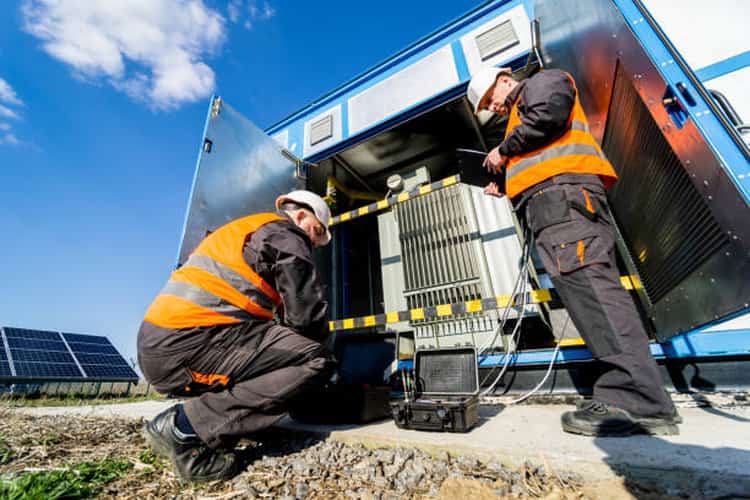Key Takeaways:
- Transformer technology is evolving rapidly, incorporating innovative features and enhanced performance capabilities.
- Industry-standard practices are being revamped to accommodate the growing demand for sustainable and efficient transformers.
- Novel materials and design approaches significantly improve transformer durability and efficiency.
- Integration with renewable energy sources is a primary focus in the transformer industry.

The Rise of Smart Transformers
Smart transformers are at the forefront of revolutionizing the energy sector, offering capabilities that traditional transformers can’t match. By incorporating digital intelligence, smart transformers provide efficient energy distribution and optimize the management of power grids. One of the most significant advancements is their real-time monitoring of operations. This feature allows for proactive maintenance, drastically reducing unexpected downtimes and maintenance costs. The data gathered from smart transformers also aids decision-making processes, facilitating more responsive and adaptable energy management strategies. As a renowned transformer manufacturer, firms are channeling efforts into developing these cutting-edge solutions, forging a path that keeps pace with ongoing technological advancements.
Sustainability and Efficiency in Focus
The global change in environmental policies is pushing industries to adopt energy-efficient solutions. Transformers are being redesigned to align with these new sustainability standards, focusing on minimizing their carbon footprint. This trend towards efficiency doesn’t only emanate from regulatory demands but also from a growing awareness of resource depletion. Advanced manufacturing processes are being utilized to produce transformers that maintain high performance while consuming less energy. These innovations have resulted in solutions harmonizing with other green technologies, like LED lighting and energy-efficient appliances.
The U.S. Environmental Protection Agency underlines the importance of such advancements, indicating they are vital to achieving broader environmental goals. Incorporating technology that conserves energy assures that transformers remain a cornerstone in the drive towards a sustainable future.
Advanced Materials and Design
Advancements in materials science are significantly shaping the future of transformer technology. Innovative materials like amorphous steel are gaining traction for reducing energy losses, leading to more efficient systems. When paired with cutting-edge design, these materials enable the production of transformers that are not only high-performing but also lighter and more compact—an essential feature for space-constrained urban environments. Additionally, the growing application of high-temperature superconductors enhances transformer resilience and efficiency beyond previous limits. To stay at the forefront of these innovations, any leading electric equipment manufacturer must integrate these evolving materials into their design and production processes.
Manufacturers continuously experiment with these novel materials to enhance performance, creating transformers that can endure significant operational stresses and have longer lifespans. This ongoing innovation represents a promising future for transformer technology, catering to urban infrastructures and renewable energy applications.
Integration with Renewable Energy
Transformers are pivotal in bridging the gap between conventional power grids and renewable energy sources. As the world gradually transitions to sustainable energy solutions, compatibility with renewable sources has become paramount. Transformatively linking solar, wind, and other renewable energies with the traditional grid infrastructure enhances reliability and flexibility.
The U.S. Department of Energy emphasizes the transformer’s essential role in this integration. By allowing real-time adaptability and energy flow management, transformers ensure that renewable sources are utilized effectively, stabilizing supply fluctuations characteristic of renewable energy.
IoT and Connectivity in Transformers
The Internet of Things (IoT) extends its influence into transformer technology, offering revolutionary connectivity options. Transformers can now support automated and intelligent grid management and preventive maintenance through IoT. They deliver critical data in real time, facilitating detailed analysis and enabling predictive models that anticipate equipment failures before they occur.
Furthermore, IoT-enabled transformers encourage more granular control over electrical grids, providing operators with the flexibility to optimize the flow of electricity across different sectors. This unprecedented connectivity elevates the operational efficiency of entire energy networks and presents innovative possibilities for future developments.
Tackling the Challenges of Modern Transformer Design
Modern transformer design faces several technical challenges that demand innovative solutions. Heat dissipation is a primary concern, as inefficient thermal management can reduce efficiency and potential failures. New cooling technologies and enhanced materials are being developed to address these thermal issues, ensuring that transformers operate efficiently.
Similarly, dealing with harmonics—undesirable frequencies in electrical systems—necessitates creative engineering solutions. Advanced software tools and modeling techniques are employed to identify and mitigate these harmonics, enhancing transformer performance and ensuring reliable service.
The Future of Transformer Technology
As we look towards the future, transformer technology promises to continue evolving and adapting to the demands of a rapidly changing energy landscape. Incorporating the latest advances in materials, digitalization, and connectivity, transformers will remain indispensable to traditional grid systems and emerging renewable energy frameworks. Their role in the energy sector as reliability pillars and efficiency enhancers will undoubtedly grow, supporting a more electrified world that is equitable and sustainable. These technological advancements hold immense potential for a future powered by innovative, robust, and environmentally friendly transformers.


